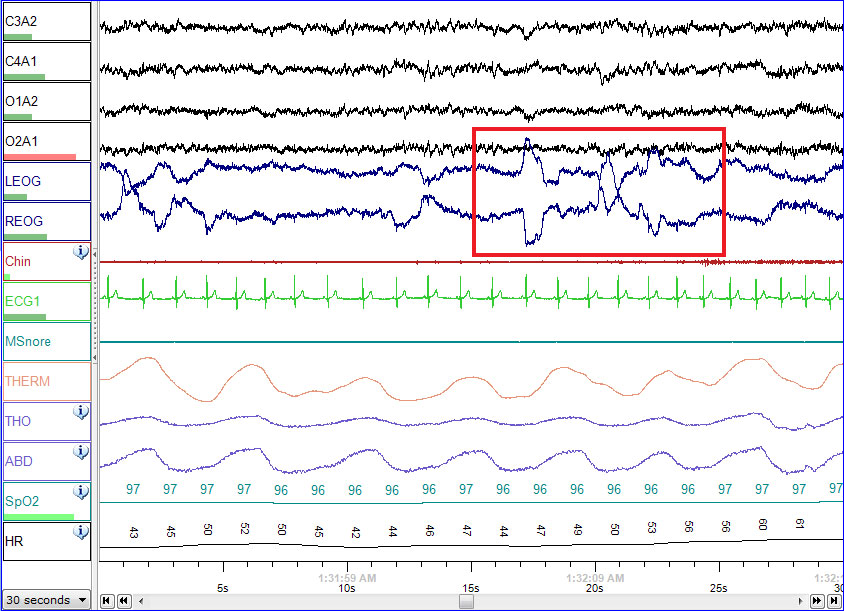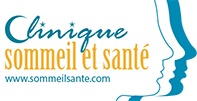How is Polysomnography Used to Diagnose Sleep Disorders?
 Polysomnography (also known as a polysomnogram or sleep study), is a complex test used to diagnose several sleep disorders, such as insomnia, narcolepsy, hypersomnia, parasomnias. Most notably, it is the gold standard in the diagnosis of Obstructive Sleep Apnea (OSA).
Polysomnography (also known as a polysomnogram or sleep study), is a complex test used to diagnose several sleep disorders, such as insomnia, narcolepsy, hypersomnia, parasomnias. Most notably, it is the gold standard in the diagnosis of Obstructive Sleep Apnea (OSA).
How does polysomnography work?
A polysomnographic test monitors elements of your physiology on up to sixteen channels: breathing, blood oxygenation, brain waves, alternation of sleep cycles, electrical activity produced by muscles, eye movement and heart rate.
A complete polysomnography takes an entire night in our sleep lab, during which Clinique Sommeil et Santé’s registered polysomnography technologists will conduct the most appropriate set of tests to fit your condition, which include Electroencephalography (EEG), Electro-Oculography (EOG), Electromyography (EMG), Electrocardiography (ECG) and more.
The data will then be analyzed by our specialists in sleep disorders, pneumology and electrophysiology to establish a diagnosis.
For example, in the case of Sleep Apnea, the frequency, duration, and nature of pauses in breathing will be measured and rated on the Apnea-Hypopnea Index (AHI).
Results of less than five are normal, anything above that can then be categorized as either mild, moderate or severe sleep apnea.
What do you need to do?
Polysomnography is painless, and our team will set you up in our diagnosis lab for the night.
The process includes the time necessary to set up the electrodes and probes that will be used in gathering data, followed by a full night’s sleep.
Depending on the symptoms exhibited, the exact format of the tests may differ, however, preparation is always the same. Unless directed otherwise by your physician or Clinique Sommeil Santé’s specialists, you must not consume alcohol, caffeine or any form of sleeping aid on the day of the test. Any substance that affects your sleep may lead to skewed results.
In some cases, such as diagnosis of Obstructive Sleep Apnea or titration of CPAP pressure in its treatment, a simpler assessment may be conducted over a few days in the comfort of your own home.
As a complete and elaborate sleep test, polysomnography remains the most effective way of diagnosing sleep disorders and Obstructive Sleep Apnea. It is an ideal first step towards sleeping soundly again and making the most out of your time awake.
